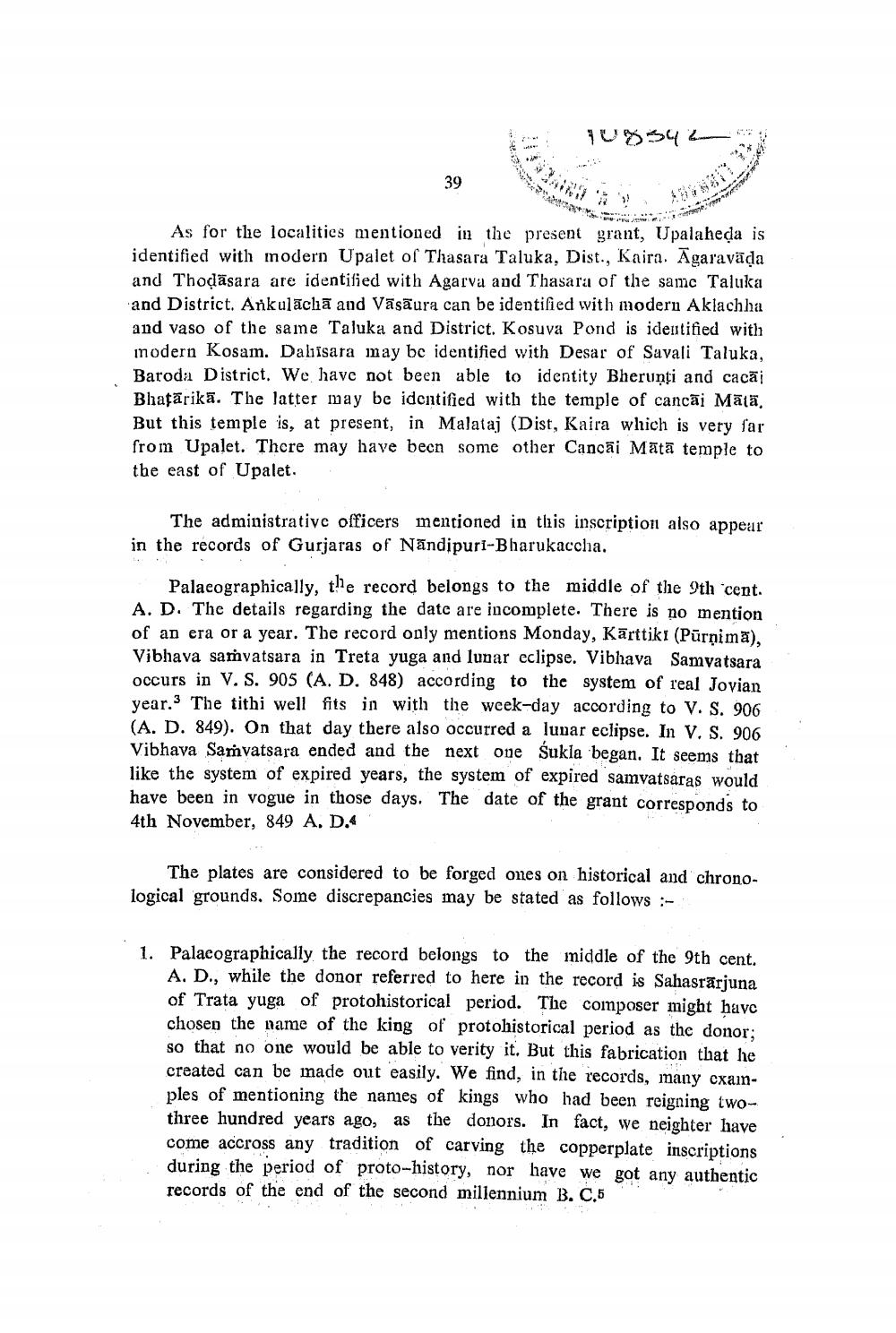________________
39
108342
As for the localities mentioned in the present grant, Upalaheda is identified with modern Upalet of Thasara Taluka, Dist., Kaira. Agaraväḍa and Thoḍāsara are identified with Agarva and Thasara of the same Taluka and District. Ankulacha and Vasaura can be identified with modern Aklachha and vaso of the same Taluka and District. Kosuva Pond is identified with modern Kosam. Dahisara may be identified with Desar of Savali Taluka, Baroda District. We have not been able to identity Bherunți and cacai Bhatarika. The latter may be identified with the temple of cancãi Mātā, But this temple is, at present, in Malataj (Dist, Kaira which is very far from Upalet. There may have been some other Cancãi Mata temple to the east of Upalet.
The administrative officers mentioned in this inscription also appear in the records of Gurjaras of Nandipuri-Bharukaccha.
Palaeographically, the record belongs to the middle of the 9th cent. A. D. The details regarding the date are incomplete. There is no mention of an era or a year. The record only mentions Monday, Karttiki (Pūrṇima), Vibhava samvatsara in Treta yuga and lunar eclipse. Vibhava Samvatsara occurs in V. S. 905 (A. D. 848) according to the system of real Jovian year. The tithi well fits in with the week-day according to V. S. 906 (A. D. 849). On that day there also occurred a lunar eclipse. In V. S. 906 Vibhava Samvatsara ended and the next one Sukla began. It seems that like the system of expired years, the system of expired samvatsaras would have been in vogue in those days. The date of the grant corresponds to 4th November, 849 A. D.4
The plates are considered to be forged ones on historical and chronological grounds. Some discrepancies may be stated as follows:
1. Palacographically the record belongs to the middle of the 9th cent. A. D., while the donor referred to here in the record is Sahasrarjuna of Trata yuga of protohistorical period. The composer might have chosen the name of the king of protohistorical period as the donor; so that no one would be able to verity it. But this fabrication that he created can be made out easily. We find, in the records, many examples of mentioning the names of kings who had been reigning twothree hundred years ago, as the donors. In fact, we neighter have come accross any tradition of carving the copperplate inscriptions during the period of proto-history, nor have we got any authentic records of the end of the second millennium B. C.5




